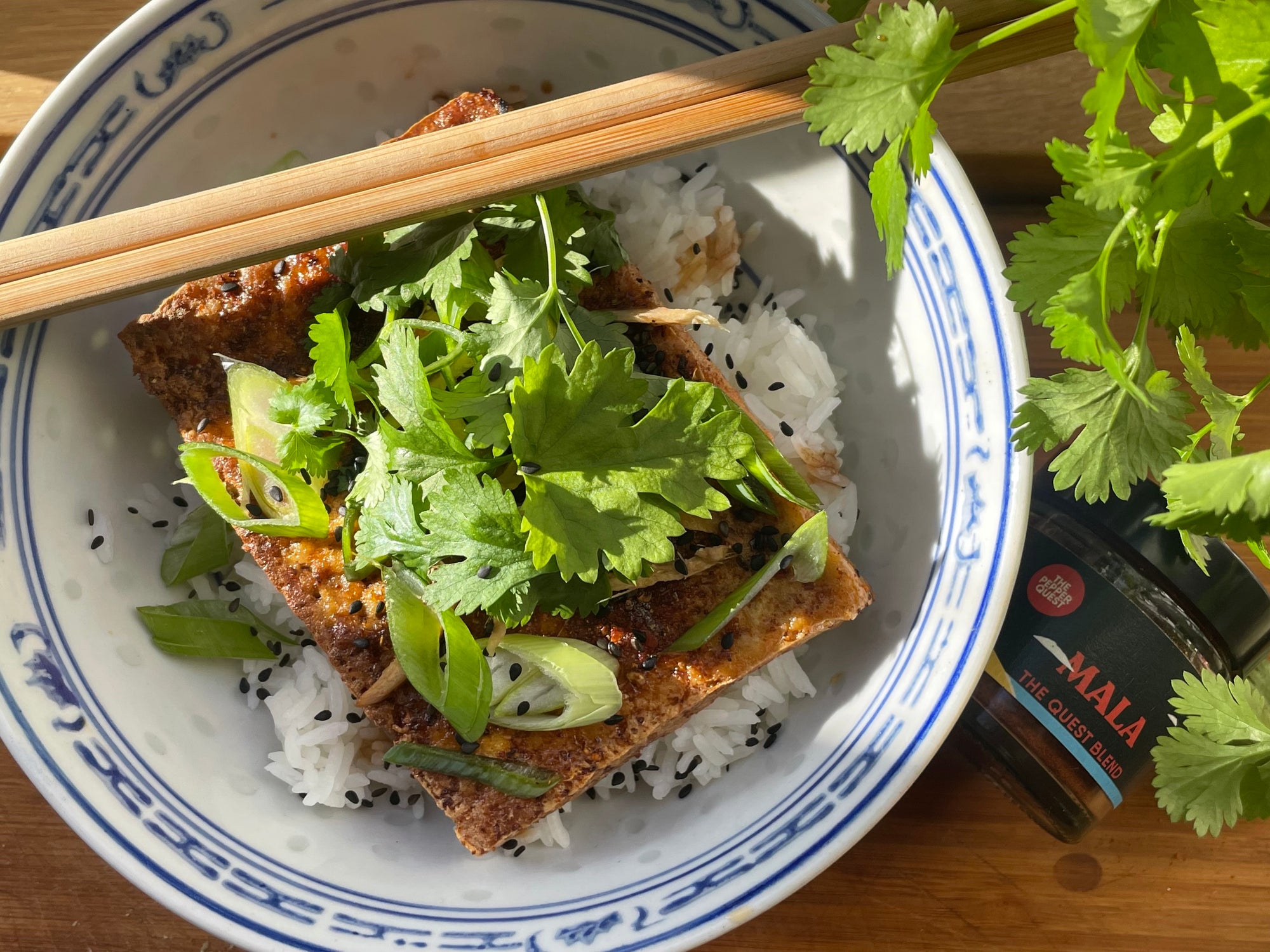Infusing chili with oil is, in our opinion, one of the best ways to add heat to a dish.
We just love it. Chili oil makes it so easy to spice up some fried rice, a salad or an avocado toast. The many ways to use it combined with the wide array of varieties you can create makes chili oil one of the most interesting condiments to learn and master.
First things first – Chili
The most important part of chili oil is of course the chili. You can use chili powder, chili flakes or grind your own chili mix of whole chilis. The chili you choose will in the end determine the taste of your oil. So if you are making a Sichuanese red oil we would recommend using chilis from Sichuan or China but with that being said we are not that traditional, we are more personal. So if you find a Mexican chili that you think marries well with an Indian chili then go ahead, in the end it is all making something that you want to use. Check out our go to recipe here.
 Chili shop in Chengdu, China
Chili shop in Chengdu, China
Roast or no roast? We like to roast all or at least some of the chili we use in our chili oil. We think it adds a nice toasty depth to the oil. You can toast them in a pan at quite high heat, stirring frequently making sure not to burn them.
Seeds or no seeds? If you have the time and energy to deseed your chili it can bring down the spiciness while enhancing the fruity and fresh taste of your chili.
Oil? We prefer cold pressed canola oil even though it does have some flavor to it. It combines well with chili and spices. We have also had good results with peanut oil although it is hard to find good peanut oil in Scandinavia. Soon we will be experimenting with olive oil and European chilis. The method will be quite different as we do not want the olive oil to reach temperatures over 50c. We will be sure to update you!
 Chili Oil in Chengdu, China
Chili Oil in Chengdu, China
Spices? Spices add depth and complexity to your chili oil but sometimes that might not be what you want. We almost always add something to add more body but we usually discard the spices after they have given oil taste. If you leave them in with your chili crisp they can alter the taste quite a lot after a while. If you are making Sichuan red oil we would definitely infuse the oil with toasted Sichuan pepper, star anise, black cardamom, cinnamon, fennel and bay leaf. When we will be experimenting with our Mexican chili oil we will be adding hibiscus, tamarind and even some vanilla!…..?! lets see how that turns out ;)
 Chili Oil Spices
Chili Oil Spices
Oil vs Crisp? We want them both so we usually do enough oil that we can have a bottle of pure chili oil and then a glass jar of half chili crisp and half chili oil.
Experimentation
We have mostly focused on creating Chinese chili oil, especially red oil from Sichuan. This oil suits us with the heavy doses of ErJingtao chili, Facing Heaven chili and Sichuan pepper creating a spicy, slightly numbing character that works well on dishes like Dan Dan noodles, Mapo Dofu, green beans etc. Also love the taste that some star anise and especially black cardamom adds to red oil.
The coming weeks we are planning to show you the steps of our Sichuan red oil but also bring you on the journey as we experiment with making other types of chili oil.
One oil will be inspired by Mexican flavors with loads of chili Guajillo cominbed with tamarind, hibiscus and a hint of vanilla. Hope this one will be great with tacos, tamale and burritos.
The other oil will be inspired by Southern European flavors marrying olive oil with Sicilian chilies and coriander seeds, Espelette peppers and a hint of smoked Pimenton. This one is especially for all the pasta lovers in mind. It will b interesting to see how we can bring out the flavors with low heat in olive oil.
If everything turns our well at the end of each week we will (hopefully) make some small bottles of the chili oils available for sale, stay tuned!
Eager to try making your own Chili oil? Check out our Chili oil kit here with step by step guide how to succeed with all the flavors.




